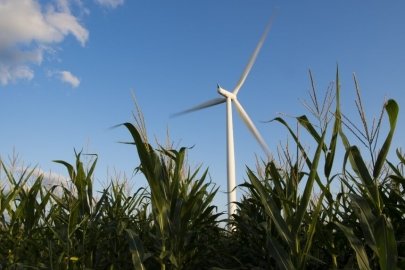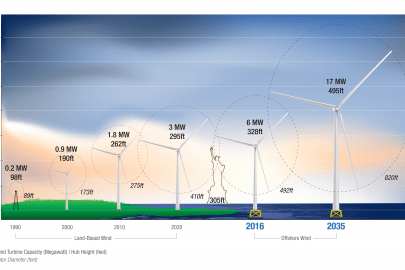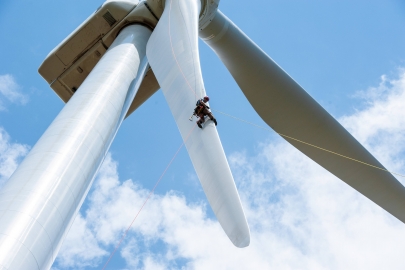The Land-Based Wind Market Report: 2021 Edition provides an overview of developments and trends in the U.S. wind power market.
Wind Energy Technologies Office
August 30, 2021The Land-Based Wind Market Report: 2021 Edition provides an overview of developments and trends in the U.S. wind power market.
Key Findings
A record 16,836 megawatts (MW) of U.S. wind capacity was installed in 2020, bringing the cumulative total to 121,955 MW. Wind power installations outpaced those in solar power for the first time in several years and represented $24.6 billion of investment. Wind provides more than 10% of electricity in 16 states, and over 30% in Iowa, Kansas, Oklahoma, South Dakota, and North Dakota.
Improvements in the cost and performance of wind power technologies, along with the Production Tax Credit, have driven wind energy capacity additions, yielding low-priced wind energy. Wind turbines continued to grow in size and power, with the average nameplate capacity of newly installed wind turbines at 2.75 MW—up 8% from 2019 and 284% since 1998−1999. The combined health, climate, and grid-system benefits of wind are almost 3 times its levelized cost of energy.
Download the Report
Land-Based Wind Market Report: 2021 Edition: Full Report
Land-Based Wind Market Report: 2021 Edition: Summary Slides
Land-Based Wind Market Report: 2021 Edition Data
Learn More
-
 Three market reports released by the U.S. Department of Energy detail trends in wind development, technology, cost, and performance through the end of 2020.
Three market reports released by the U.S. Department of Energy detail trends in wind development, technology, cost, and performance through the end of 2020. -
 Learn how wind energy can provide health and climate benefits that outweigh its costs.
Learn how wind energy can provide health and climate benefits that outweigh its costs. -
 Since the early 2000s, wind turbines have grown in size—in both height and blade lengths—and generate more energy. What’s driving this growth? Let’s take a closer look.
Since the early 2000s, wind turbines have grown in size—in both height and blade lengths—and generate more energy. What’s driving this growth? Let’s take a closer look. -
 Brush up on your knowledge of wind! Get the details on a few of the lesser-known wind energy facts.
Brush up on your knowledge of wind! Get the details on a few of the lesser-known wind energy facts.


